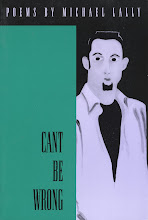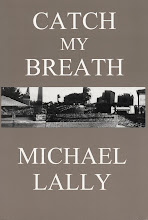Just watched THE YOUNG SAVAGES. The 1961 black and white film about a teenage gang killing in New York City, based on the Evan Hunter novel A MATTER OF CONVICTION, which was inspired by the “capeman” killings around that time.
I remember when THE YOUNG SAVAGES came out, the impact it had on me when I first saw it [I've mentioned this before I think]. I thought it was one of the most realistic depictions of what I knew about gangs at that time that I’d ever seen. I was on my way to joining the service and starting a life far away from my roots, and writing what I thought at the time were realistic depictions of those roots that I’d rarely if ever seen in books or on film. So when I saw anything that seemed closer to reality then other movies, I dug it. And this was one of those times.
Not that I grew up in the slums of New York, but I’d been hanging around them for a few years by then and had friends who did and who ran in some of the more notorious gangs of those times.
Part of what made this an exceptional film was the caliber of the actors in it, especially the grown up leads, Burt Lancaster, Dina Merrill, and Shelly Winters.
Winters, who plays the sad sack single slum mother of one of the accused murderers, hadn't become a caricature yet. And Burt Lancaster, who plays her old boyfriend now a prosecutor in the D.A.'s office charged with convicting her son, was still physically magnificent as his de rigueur shirtless scene proves. While Dina Merrill does her usual great job of playing the beautiful conflicted blonde WASP (a “Vassar girl” as Lancaster’s character calls her).
The killers belong to an Italian street gang and the victim is part of the Puerto Rican one. The hairstyles and clothes styles are pretty true to the times, for the most part, especially in the case of the Puerto Rican gang.
There’s the usual social worker slant to the film, which may seem overdone by contemporary standards, but at the time seemed sincere and accurate. At any rate, it kept me watching long after I meant to turn off the TV and do some reading before bed. And for me that’s always a good sign of a personal classic.
I’ve probably seen it once or twice since it first came out, and yet I sat there and watched it through to the end again. I was impressed also with some of the young actors, most of whom I don’t remember ever seeing again, especially Luis Arroyo, the leader of the Puerto Rican gang, and Pilar Seurat, who plays the victim’s sister beautifully.
Chris Robinson, who plays the leader of the Italian gang does some very interesting work as well, and the young actors who play the alleged killers are all good too, though John Davis Chandler, who plays the most twisted and nasty of them, does his usual over the top sneeringly deranged evildoer which he did in several films back then, and though he did it well it now seems a little overdone.
Neil Nephew and Stanley Kristien as the other two alleged murderers do a good job too. Nephew looks familiar, so I may have seen him in other roles, but Kristien I don’t think I ever saw again either. A lot of these actors don’t look correct ethnically, including Vivien Nathan who plays the victim’s mother supposedly born in Puerto Rico and not fluent in English, but she still has some powerful moments.
THE YOUNG SAVAGES brings back a time when the reality about gangs and the news stories about them was that the worst of them, or the most notorious that did the most damage, were identified more by ethnic group—either Italian or Irish, or the Puerto Ricans just beginning to make a splash.
What would later be called “black” gangs were almost never in the news, and were still in the minority. A combination of upward mobility, a heroin epidemic, and what became known as “the ‘sixties” (really the late ‘sixties and early ‘seventies) ended most of the bigger “white” gangs outside of prison.
THE YOUNG SAVAGES in many ways marks what in retrospect was their death knell. Worth watching I think, if you haven’t seen it.
Subscribe to:
Post Comments (Atom)
















1 comment:
Which reminds me:
I strongly recommend Fox Butterfield's book, I think it's called "All God's Children," about the social history of gang culture in the US. He dates them back to Scottish immigrants in early American days. It's fascinating and highly readable.
It's interesting to take a historical look of gangs, as you you did. It's important to remind ourselves that they were once considered a 'white' phenomenon. I suspect a lot of people have forgotten that, or never knew ...
In the end, gangs are a human phenomenon not bound or defined by race. And they come in all sizes - from street-sized to nation-sized. Don't they?
Post a Comment